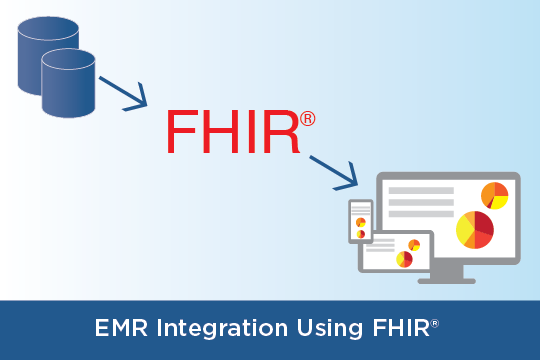
Last month, we hosted our 7th annual Iguana User Conference in Chicago. This year’s theme was centred around looking towards the future of healthcare interoperability specifically through API driven integration. Through several interactive presentations, our experts shared with our customers how APIs can help them adapt to the rapidly changing healthcare landscape. This week, we’ll share expert knowledge from iNTERFACEWARE’s Integration Analyst, Marcus Walters, on integration with EMRs through the use of FHIR.
New Trends in Healthcare
In healthcare today, integration with EMRs is essential for many providers, payers, and vendors because it plays a crucial role in connecting systems and data. However, accessibility to information systems and health data continues to be a challenge for many of these stakeholders, making care delivery less patient-centred. For this reason, the Office of the National Coordinator for Health Information Technology (ONC), has established policies to ensure the improvement of access to information, the ability for patients to access their records through APIs, and new tools for providers that allow for more choice in care.
FHIR
Fast Healthcare Interoperability Resources (FHIR) includes data formats (resources on patients, medications, encounters, etc.) as well as application programming interfaces (APIs) that exchange these resources. It is a dominant standard that is allowing external parties to access information from EMRs through the use of applications. It also allows third parties to create their own applications that can access these servers. For example, EHRs such as Epic and Cerner, have their own FHIR app stores where providers (doctors, clinicians, etc.) as well as patients can access their data through these 3rd party applications.
Da Vinci Project
According to HL7.org, the Da Vinci Project is a private sector initiative that leverages the HL7 FHIR platform to address the needs of the Value-Based Care community. The project responds to a need to establish a rapid multi-stakeholder process for addressing value-based care delivery use cases that can be implemented on a national basis. The objective is to minimize the development and deployment of unique solutions between trading partners (e.g. a payer and provider) by utilizing use cases to facilitate workflows required for value-based care via standards. These standards include FHIR and SMART (Substitutable Medical Applications, Reusable Technologies), an authentication framework for the connection of 3rd party applications to EMRs. The Da Vinci project uses FHIR due to its robustness, the rapid communication between stakeholders, and the SMART on FHIR application capabilities to make interoperability more seamless.
The Role Iguana Plays
Iguana is able to support all four FHIR versions and has the flexibility to allow SMART on FHIR applications to be built within it. These applications are able to connect to EMRs and can be authenticated according to SMART standards. In addition, SMART on FHIR apps built within Iguana can be made to adhere to Da Vinci Project use cases.
To learn more about how Iguana can assist in connecting to EMRs through the use of SMART on FHIR application or for anything else integration related, contact us.
